F-18F Super Hornet at Dayton Airshow 2003
|
The F-18 Super Hornet is a development of the standard F-18 Hornet, which first flew in 1978. The Super Hornet is four feet longer than the Hornet, has a 25% larger wing, can carry 33% more internal fuel, giving it 40% greater range, and has engines which are 35% more powerful. This is the two-seat F-18F version (or, more properly F/A-18F, to designate that it performs both fighter and attack roles). |
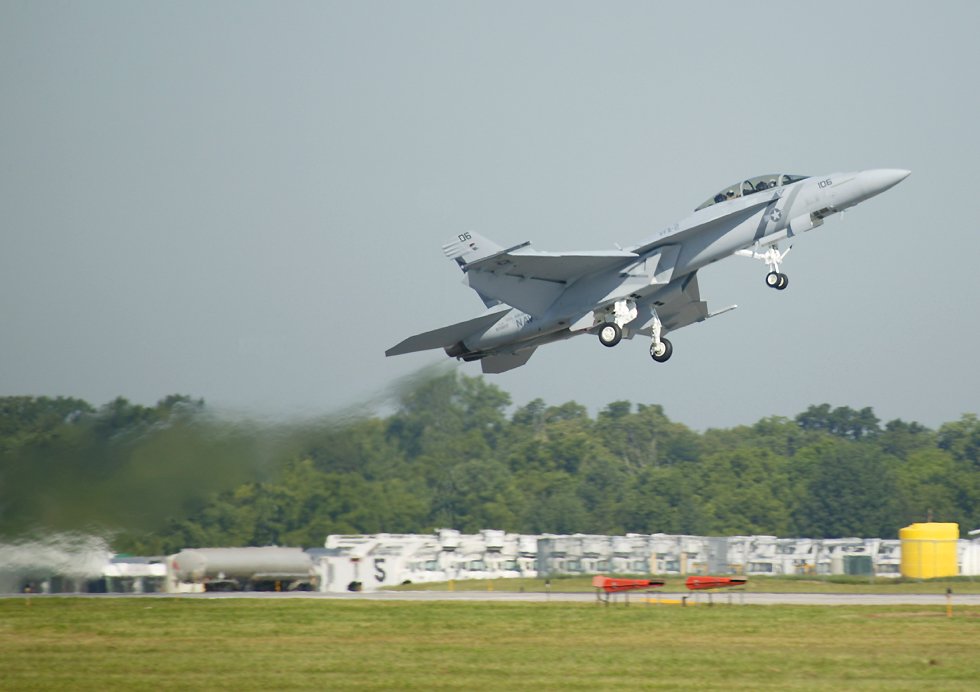 |
|
Here we see it starting a maximum exertion turn, with its afterburner engaged. |
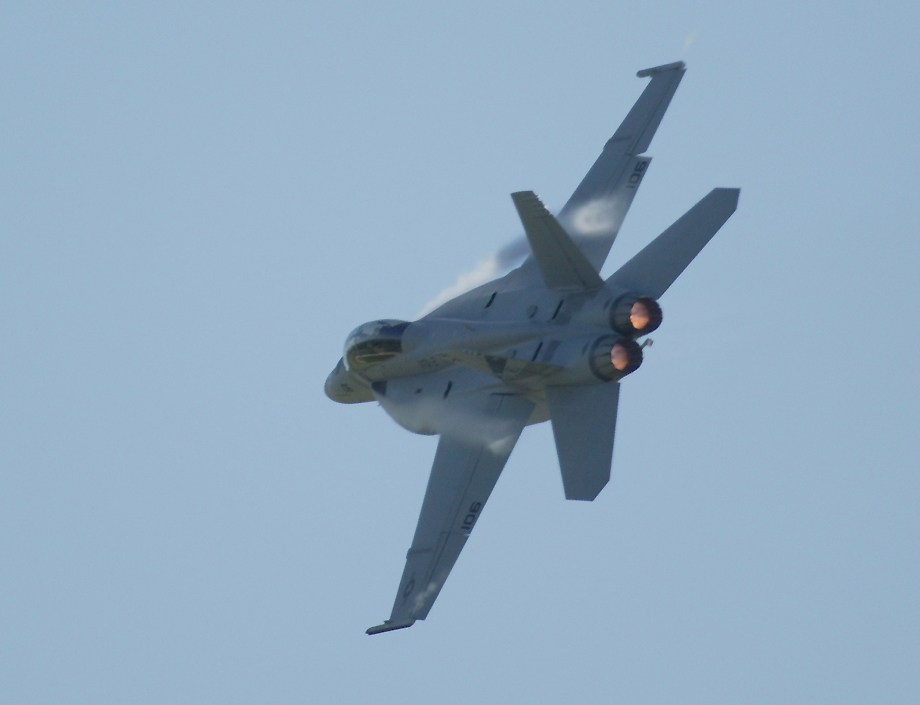 |
|
Doing maneuvers at these speeds results in quite a lot of water vapor being created, as partial vacuums form behind different parts of the plane. |
 |
|
The Super Hornet's more powerful engines mean that the engine intakes had to be redesigned, providing one easy way to distinguish a Super Hornet from a Hornet - the Super Hornet has rectangular intakes, while the Hornet has curved intakes. You can see another distinguishing mark in this photo - the Super Hornet has a "dog tooth" in its wings which the Hornet lacks. You can see this dog tooth about a third of the way in from the ends of the wings; notice the line from the front of the wing to the back, starting at the dog tooth - this is where the wings fold to allow more aircraft to be packed into an aircraft carrier. |
 |
|
The Super Hornet first flew in 1995 and entered service in 2001. Here you see it in its "dirty configuration", with flaps, tail hook and everything else hanging out, as if it were about to land on an aircraft carrier. |
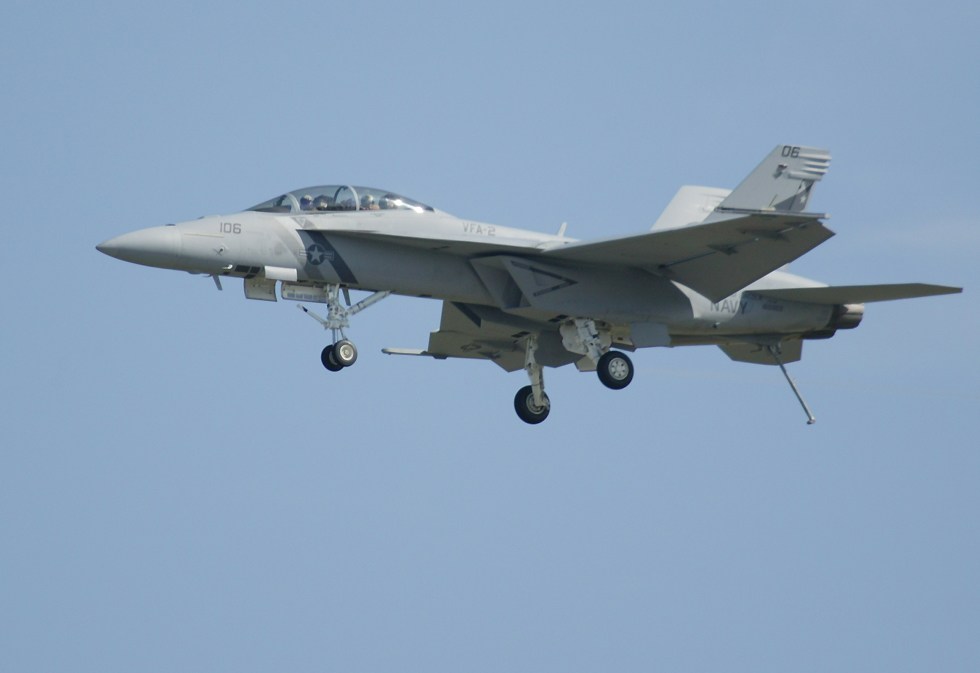 |
|
This particular aircraft belongs to the squadron VFA-122, based on the USS Abraham Lincoln. |
 |
|
Here's the Super Hornet making some serious speed in straight and level flight... |
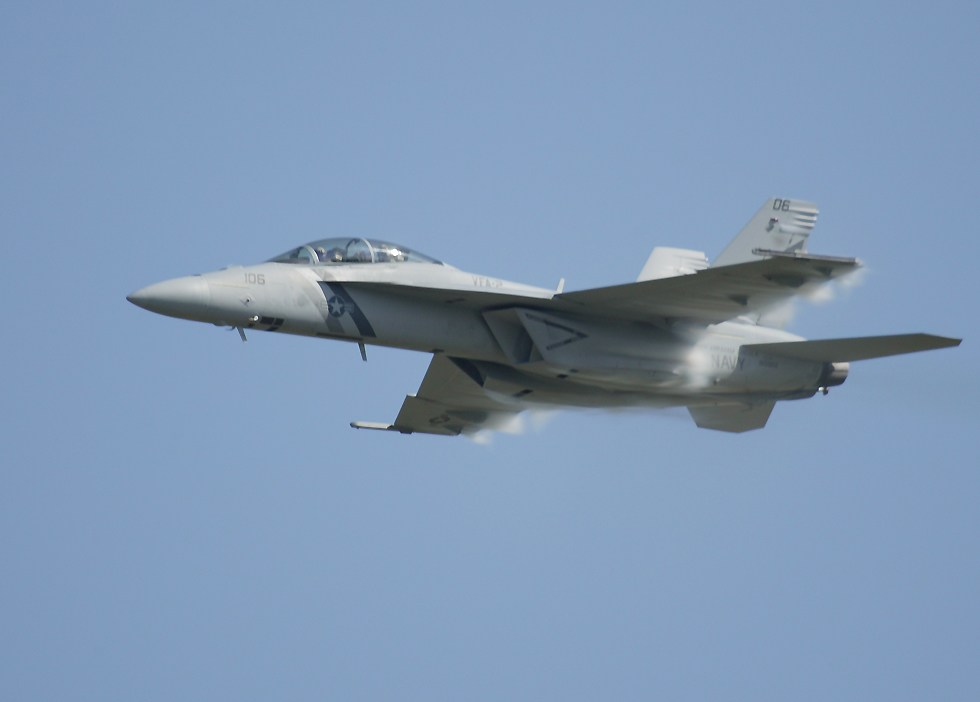 |
 |
|
Here's something I've seen published before, but never experienced myself - a small vapor cone. No, this isn't a sign that the plane's going supersonic, but it's certainly getting pretty close! You can now see a much better photo of an F-18F Super Hornet with a far larger vapor cone, which will open in a new window. |
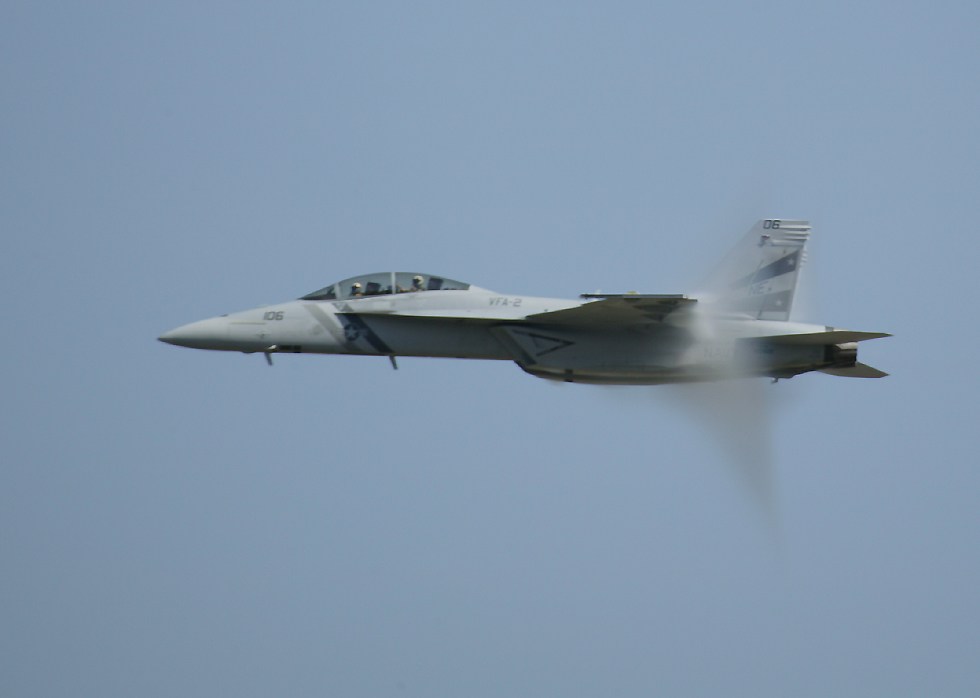 |
|
Tip the nose up, and let's see what this puppy can do! You can see the GIB ("guy in back") put one hand onto the grips to hang on as the afterburner pushes the plane up. |
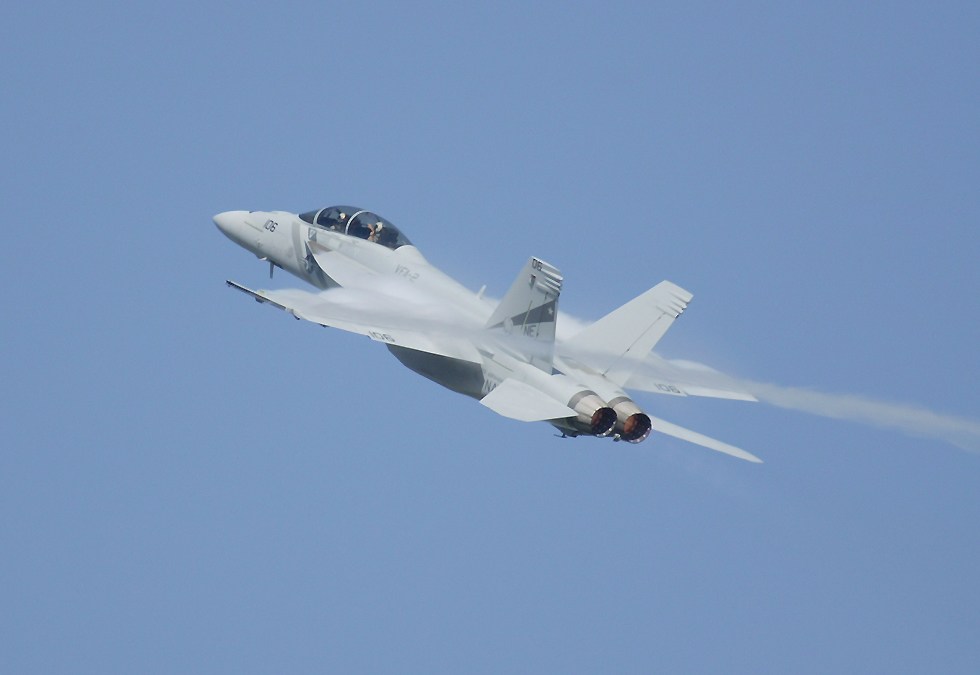 |
|
... getting serious now ... |
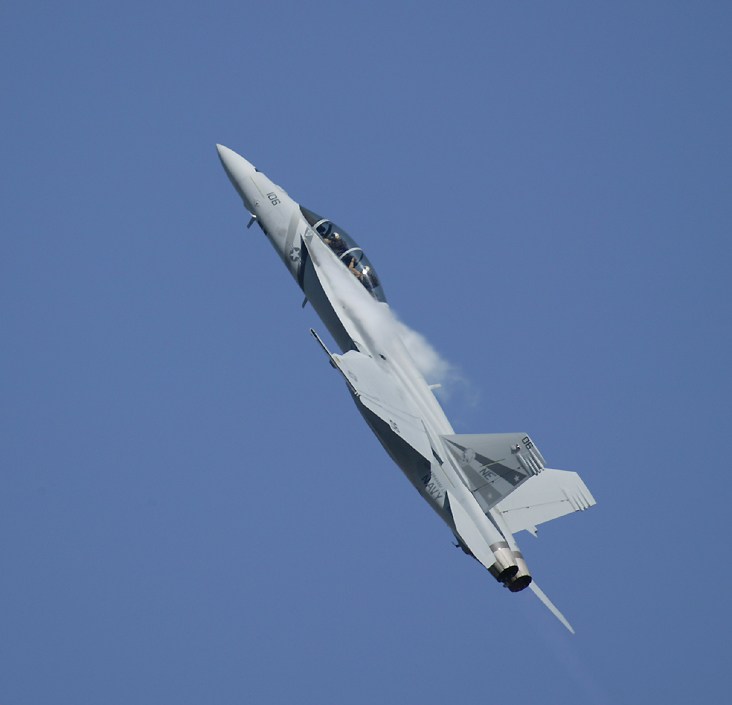 |
|
Two hands on the rail as the sky turns darker blue and the GIB starts wondering what the pay rates are for astronaut service! |
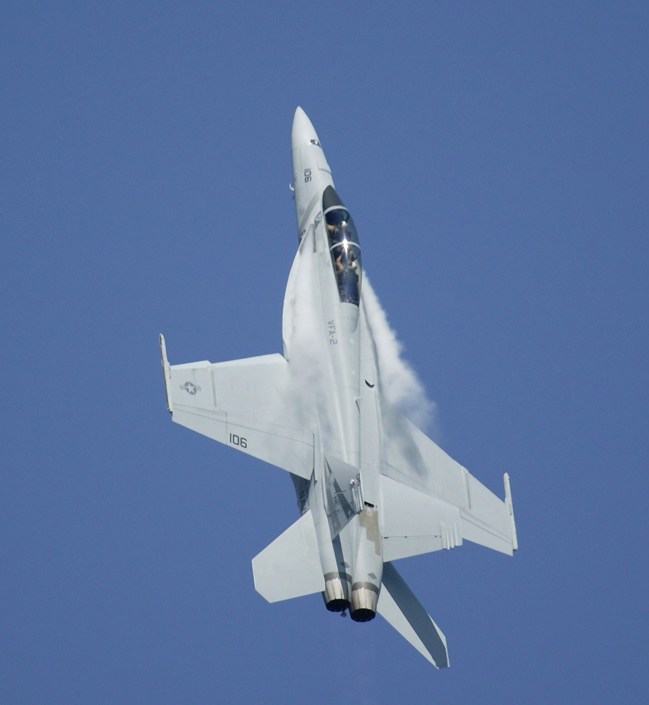 |
